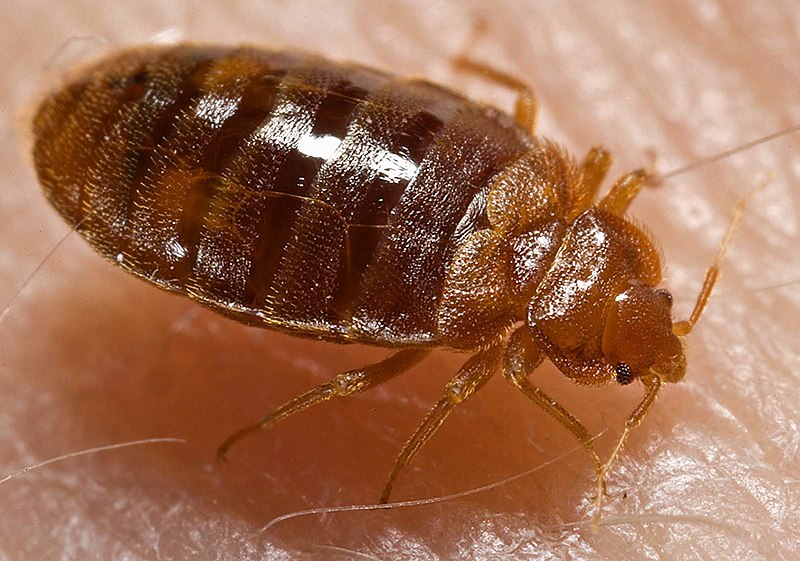Файл:Bed bug, Cimex lectularius.jpg
Appearance

Памер папярэдняга прагляду: 800 × 561 пікселяў. Іншыя разрозненні: 320 × 224 пікселяў | 640 × 449 пікселяў | 1 024 × 718 пікселяў | 1 280 × 898 пікселяў | 1 600 × 1 122 пікселяў.
Арыгінальны файл (1 600 × 1 122 кропак, аб’ём файла: 161 KB, тып MIME: image/jpeg)
Гісторыя файла
Націснуць на даце з часам, каб паказаць файл, якім ён тады быў.
| Дата і час | Драбніца | Памеры | Удзельнік | Тлумачэнне | |
|---|---|---|---|---|---|
| актуальн. | 17:11, 17 мая 2007 |  | 1 600 × 1 122 (161 KB) | Patho | == Summary == {{Information |Description=ID#: 9822 Description: This 2006 photograph depicted an oblique-dorsal view of a '''bed bug nymph, Cimex lectularius''', as it was in the process of ingesting a blood meal from the arm of a “voluntary” human h |
Выкарыстанне файла
Наступная 1 старонка выкарыстоўвае гэты файл:
Глабальнае выкарыстанне файла
Гэты файл выкарыстоўваецца ў наступных вікі:
- Выкарыстанне ў af.wikipedia.org
- Выкарыстанне ў an.wikipedia.org
- Выкарыстанне ў ar.wikipedia.org
- Выкарыстанне ў arz.wikipedia.org
- Выкарыстанне ў ast.wikipedia.org
- Выкарыстанне ў as.wikipedia.org
- Выкарыстанне ў azb.wikipedia.org
- Выкарыстанне ў bg.wikipedia.org
- Выкарыстанне ў bjn.wikipedia.org
- Выкарыстанне ў bn.wikipedia.org
- Выкарыстанне ў bs.wikipedia.org
- Выкарыстанне ў ca.wikipedia.org
- Выкарыстанне ў ca.wikiquote.org
- Выкарыстанне ў ca.wiktionary.org
- Выкарыстанне ў ceb.wikipedia.org
- Выкарыстанне ў cs.wikipedia.org
- Выкарыстанне ў cv.wikipedia.org
- Выкарыстанне ў dag.wikipedia.org
- Выкарыстанне ў de.wikibooks.org
- Выкарыстанне ў din.wikipedia.org
- Выкарыстанне ў el.wikipedia.org
- Выкарыстанне ў eml.wikipedia.org
- Выкарыстанне ў en.wikipedia.org
- Выкарыстанне ў en.wikinews.org
- Выкарыстанне ў en.wiktionary.org
Паказаць глабальнае выкарыстанне гэтага файла.

